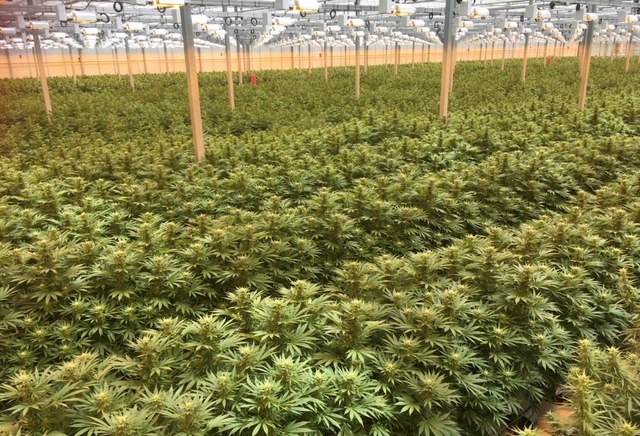Learn About Greenhouse Cannabis Cultivation - High Park
High Park has greenhouses covering about 365,000 square feet in Ontario. To take full advantage of natural sunlight, the greenhouses are transparent.
“Greenhouse cultivation isn’t a walk in the park. It takes a lot of expertise and time to fully master it. Fortunately, we have a skilled and experienced team.” Françoise Lévesque, Master Horticulturist at High Park

Step 1 – Select the strains
High Park has a 65-cultivar gene bank at the company’s head office in British Columbia. Seven strains, including Jean Guy, are currently grown in their Ontario greenhouse.
Step 2 – Grow the mother plants
Time required: about 6 months
Whatever the production type, seeds of the strains considered most promising (due to their resistance to poor weather conditions or popularity with users) are planted. These become the mother plants.
Step 3 – Take cuttings of the mother plants
Time required: 1 day
Mother plants are plants from which cuttings can be taken. The room in which the mother plants is grown is usually called the propagation room. Once the mother plants reach maturity, they can be kept going for a few months. A new set of mother plants is always being grown to replace the preceding generation. A mother plant typically produces 200 to 400 cuttings.
Step 4 – Grow the cuttings
Time required: about 4 weeks
The High Park greenhouses have two huge veg rooms. This is the critical step. Plant quality is usually determined during these first four weeks.
Step 5 – Transplant the young plants
The young plants are planted in blocks of 2,000 to 2,600. Each greenhouse compartment usually contains a single variety. This makes watering easier, as all the plants behave identically. They will also be ready for harvest at the same time.
Step 6 – Flower the plants
Time required: 8 to 12 weeks, depending on the strain
During this stage, a team visits the greenhouses every day to check that the plants are receiving enough water and light and the temperature is optimal. Actually, the environment is much harder to control than in indoor flowering rooms. Insects such as predacious mites and parasitoid wasps are released in the greenhouses to help control insect pests that could destroy the plants.
Step 7 – Harvest the plants
Time required: 1 to 5 days, depending on the size of the harvest
In the High Park greenhouses, a batch (the contents of one compartment) is harvested by hand in a day. Around 25 employees are involved. They cut the stems and separate and trim the flowers before moving them to the drying rooms.
Step 8 – Dry the plants
Time required: about 1 week
The cannabis plants are placed on shelves and dried for five days.
Step 9 – Trim the plants
Time required: about 5 days, depending on the size of the harvest
The flowers are trimmed mechanically using a Mobius trimmer.
Step 10 – Have the harvest tested by a laboratory
Time required: two to four weeks
Producers are required by law to send a certain quantity of each batch they produce to an independent Health Canada-certified laboratory for testing.
The analyses accurately detect the presence of even trace amounts of pesticides, bacteria, mould, residual solvents, mycotoxins and heavy metals, including lead, arsenic, mercury and cadmium. The product’s concentration of cannabinoids (THC, CBD, etc.), moisture content and terpene profile are also determined. For more information on this, click here.
A producer that destroys a batch declared unfit for use by the laboratory must do so in the presence of a person who holds a government-issued security clearance. The process must be filmed and two witnesses have to sign a document attesting that the batch was indeed destroyed.
Step 11 – Package the products
Time required: a few days
The dried cannabis is then transformed (into edibles, oils and pre-rolleds) or simply packaged at the greenhouse or the London (Ontario) transformation facility.
Step 12 – Affix the excise tax stamps
Once the product is packaged, the employees have to stick an excise tax stamp over the opening of the container or secondary packaging (if any). Producers purchase the stamps from the federal government, which transfers part of the sums collected to the provinces where the products are sold. To buy stamps, producers must hold a licence granted only to producers licensed by Health Canada. Several other security measures are mandatory for cannabis producers. These include producing a detailed daily production report.
Step 13 – Deliver the products to the SQDC
Producers are responsible for delivering their products to all the SQDC stores that carry them.







